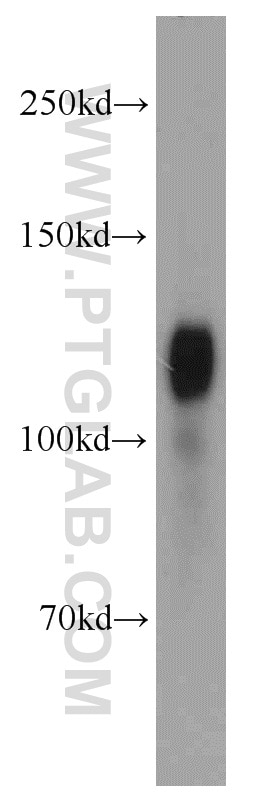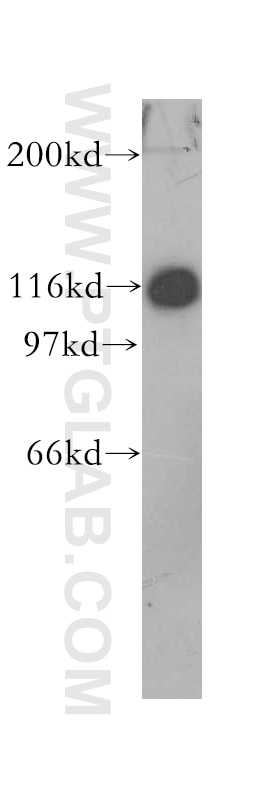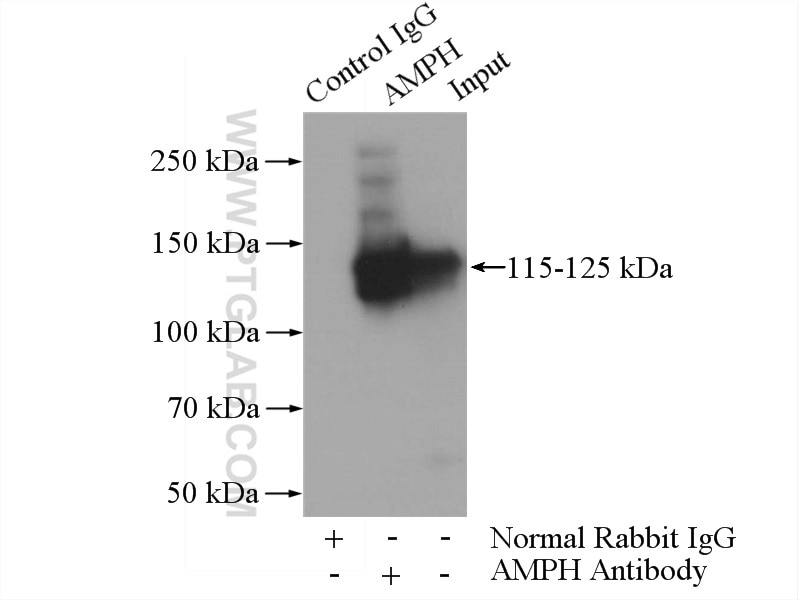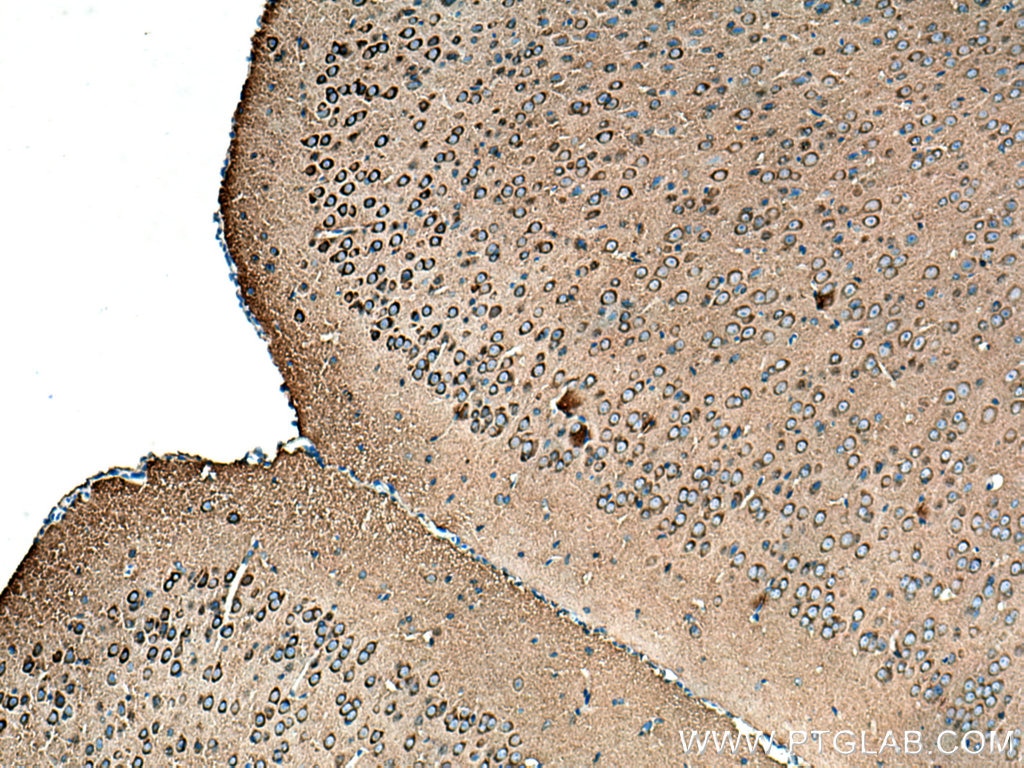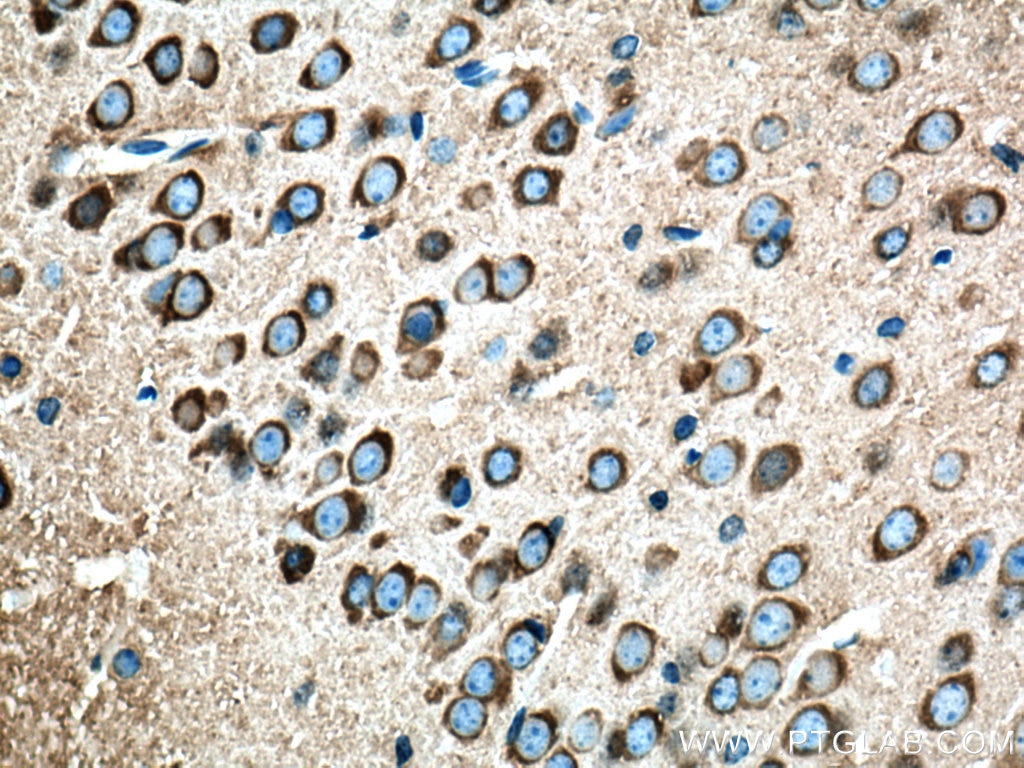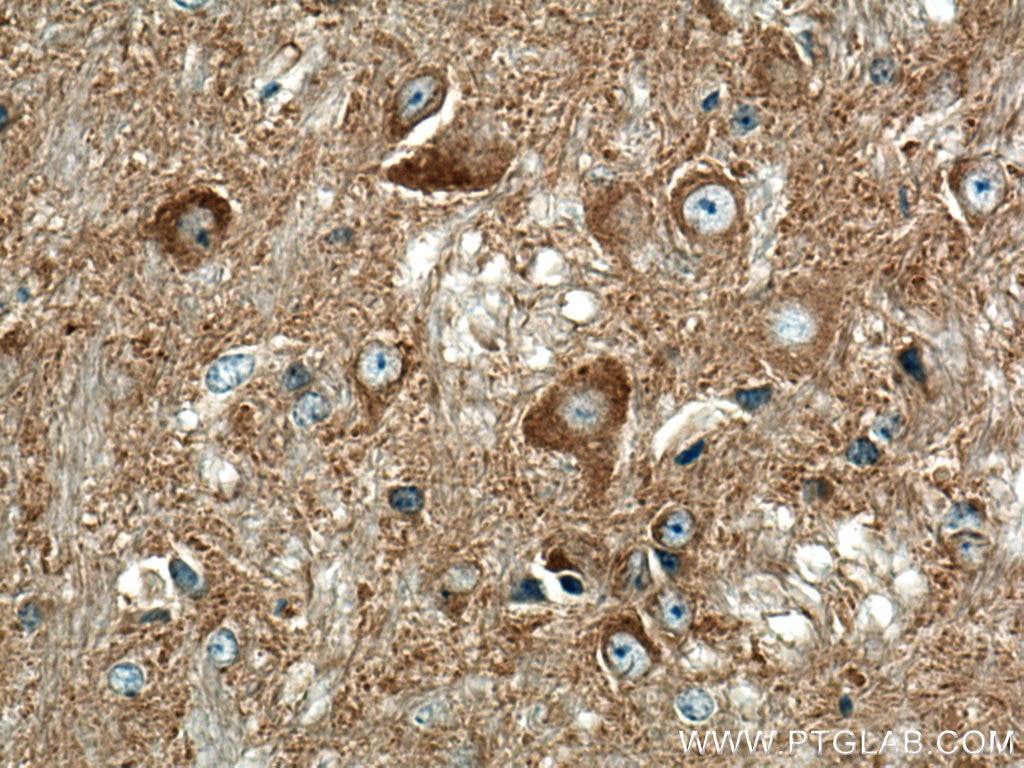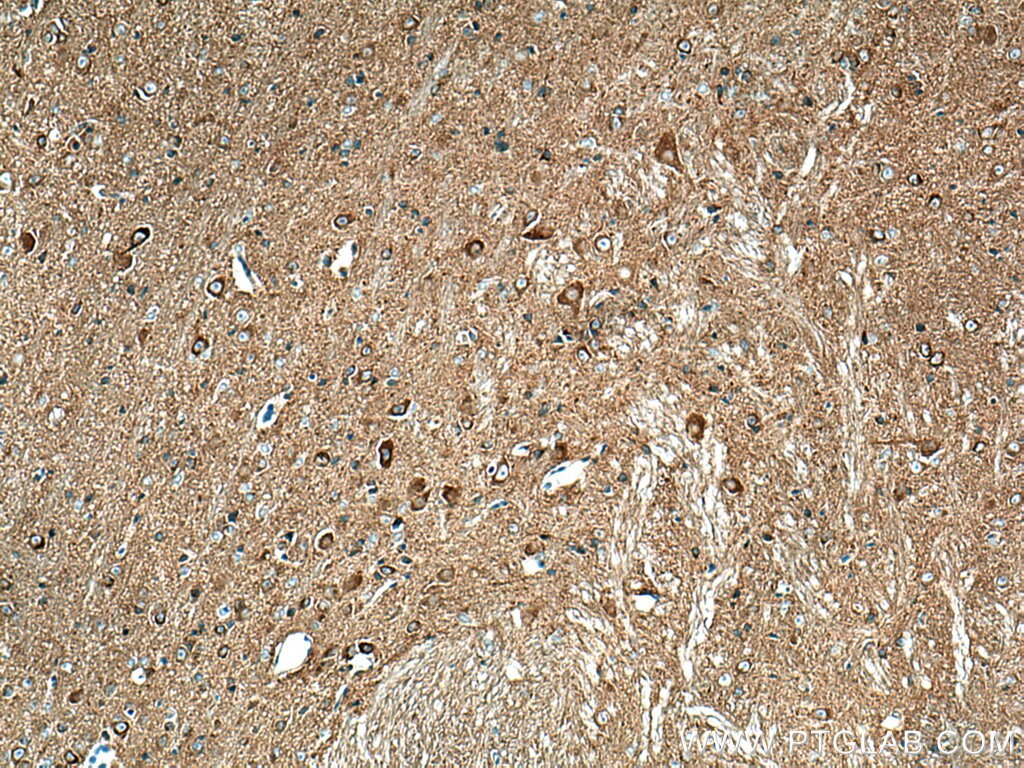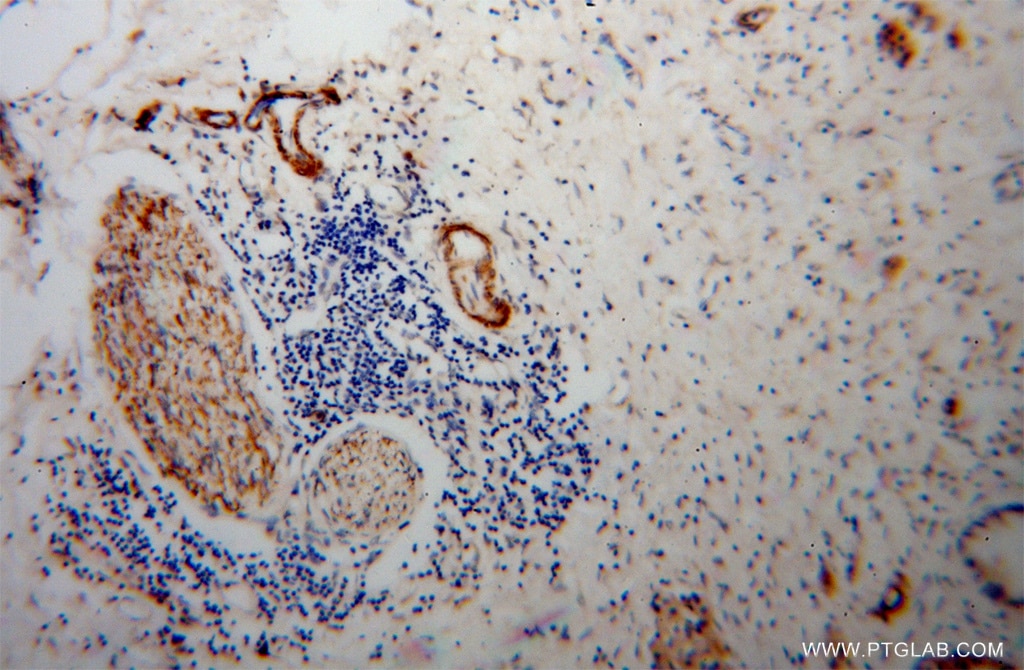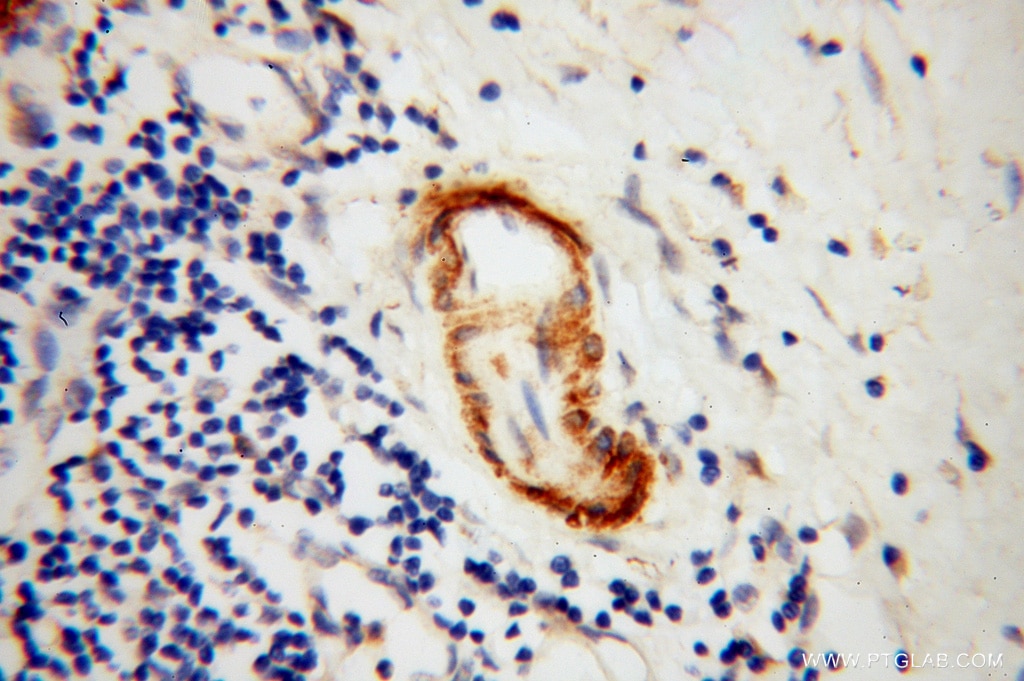- Featured Product
- KD/KO Validated
Amphiphysin Polyklonaler Antikörper
Amphiphysin Polyklonal Antikörper für WB, IHC, IP, ELISA
Wirt / Isotyp
Kaninchen / IgG
Getestete Reaktivität
human, Maus, Ratte
Anwendung
WB, IHC, IF, IP, ELISA
Konjugation
Unkonjugiert
Kat-Nr. : 13379-1-AP
Synonyme
Geprüfte Anwendungen
| Erfolgreiche Detektion in WB | Maushirngewebe, Mauslungengewebe |
| Erfolgreiche IP | Maushirngewebe |
| Erfolgreiche Detektion in IHC | Maushirngewebe, humanes Pankreaskarzinomgewebe, Maus-Cerebellum-Gewebe Hinweis: Antigendemaskierung mit TE-Puffer pH 9,0 empfohlen. (*) Wahlweise kann die Antigendemaskierung auch mit Citratpuffer pH 6,0 erfolgen. |
Empfohlene Verdünnung
| Anwendung | Verdünnung |
|---|---|
| Western Blot (WB) | WB : 1:500-1:3000 |
| Immunpräzipitation (IP) | IP : 0.5-4.0 ug for 1.0-3.0 mg of total protein lysate |
| Immunhistochemie (IHC) | IHC : 1:50-1:500 |
| It is recommended that this reagent should be titrated in each testing system to obtain optimal results. | |
| Sample-dependent, check data in validation data gallery | |
Veröffentlichte Anwendungen
| KD/KO | See 3 publications below |
| WB | See 9 publications below |
| IHC | See 7 publications below |
| IF | See 5 publications below |
Produktinformation
13379-1-AP bindet in WB, IHC, IF, IP, ELISA Amphiphysin und zeigt Reaktivität mit human, Maus, Ratten
| Getestete Reaktivität | human, Maus, Ratte |
| In Publikationen genannte Reaktivität | human, Maus |
| Wirt / Isotyp | Kaninchen / IgG |
| Klonalität | Polyklonal |
| Typ | Antikörper |
| Immunogen | Amphiphysin fusion protein Ag4204 |
| Vollständiger Name | amphiphysin |
| Berechnetes Molekulargewicht | 695 aa, 76 kDa |
| Beobachtetes Molekulargewicht | 115-125 kDa |
| GenBank-Zugangsnummer | BC034376 |
| Gene symbol | AMPH |
| Gene ID (NCBI) | 273 |
| Konjugation | Unkonjugiert |
| Form | Liquid |
| Reinigungsmethode | Antigen-Affinitätsreinigung |
| Lagerungspuffer | PBS with 0.02% sodium azide and 50% glycerol |
| Lagerungsbedingungen | Bei -20°C lagern. Nach dem Versand ein Jahr lang stabil Aliquotieren ist bei -20oC Lagerung nicht notwendig. 20ul Größen enthalten 0,1% BSA. |
Hintergrundinformationen
Amphiphysin (AMPH), a synaptic vesicle-associated protein that is highly concentrated in nerve terminal, is an autoantigen of Stiff-Man syndrome with breast cancer. Amphiphysin contains a N-terminal BAR (Bin1/Amphiphysin/Rv167) domain followed by an endocytosis domain, and a C-terminal SH3 domain. Amphiphysin has been proposed to function as a linker between the clathrin coat and dynamin in the endocytosis of synaptic vesicles. It may also participate in mechanisms of regulated exocytosis in synapses and certain endocrine cell types. (PMID: 8552632; 8245793; 10559861)
Protokolle
| PRODUKTSPEZIFISCHE PROTOKOLLE | |
|---|---|
| WB protocol for Amphiphysin antibody 13379-1-AP | Protokoll herunterladen |
| IHC protocol for Amphiphysin antibody 13379-1-AP | Protokoll herunterladenl |
| IP protocol for Amphiphysin antibody 13379-1-AP | Protokoll herunterladen |
| STANDARD-PROTOKOLLE | |
|---|---|
| Klicken Sie hier, um unsere Standardprotokolle anzuzeigen |
Publikationen
| Species | Application | Title |
|---|---|---|
Nat Cell Biol Stromal-epithelial crosstalk regulates kidney progenitor cell differentiation. | ||
Development Canonical Wnt9b signaling balances progenitor cell expansion and differentiation during kidney development. | ||
Aging (Albany NY) Maternal high sugar and fat diet benefits offspring brain function via targeting on the gut-brain axis. | ||
Aging (Albany NY) A five-m6A regulatory gene signature is a prognostic biomarker in lung adenocarcinoma patients. | ||
J Cell Mol Med AMPH1 functions as a tumour suppressor in ovarian cancer via the inactivation of PI3K/AKT pathway.
|
